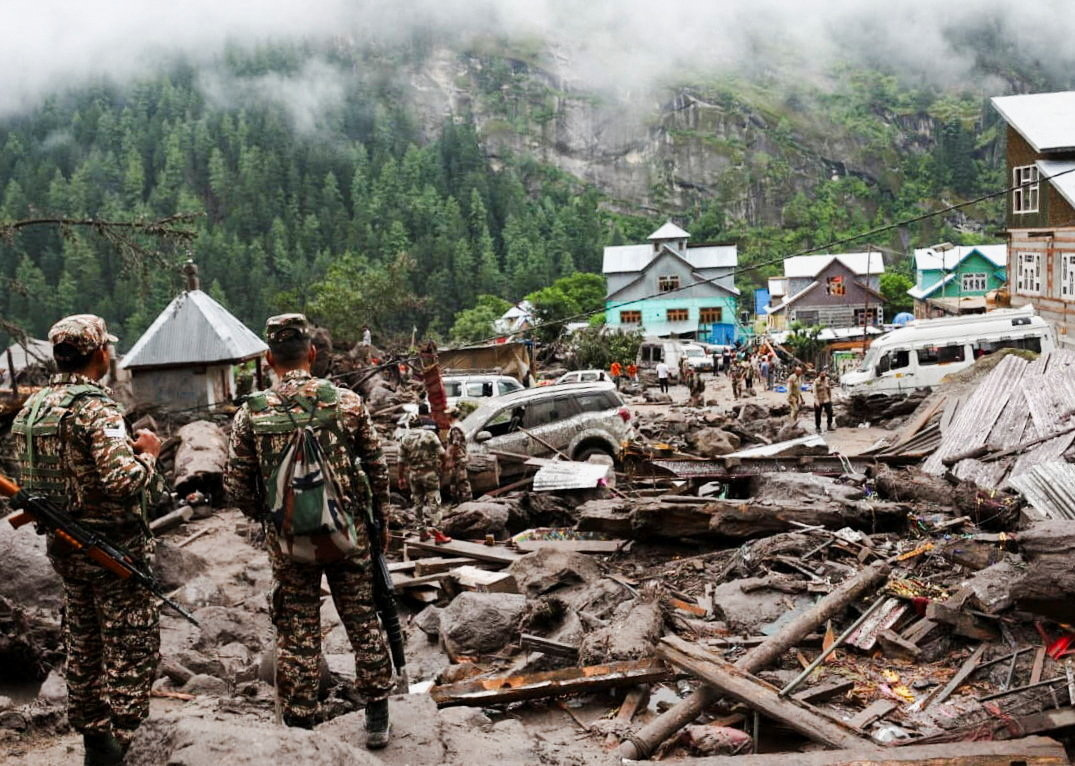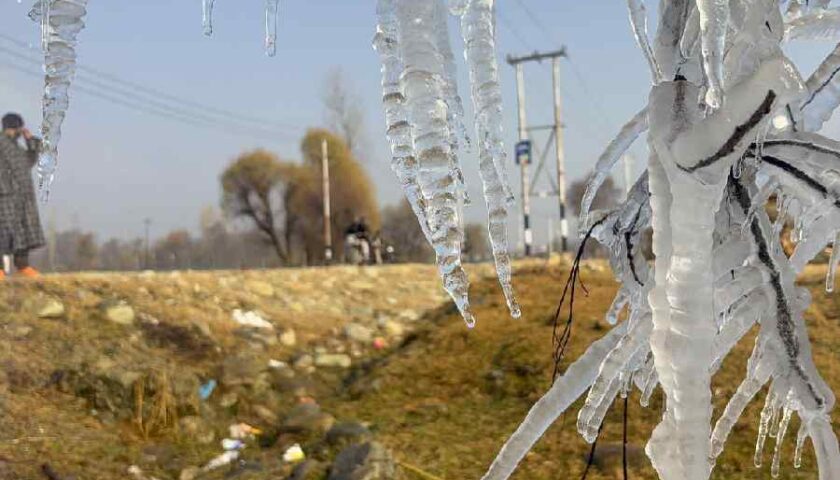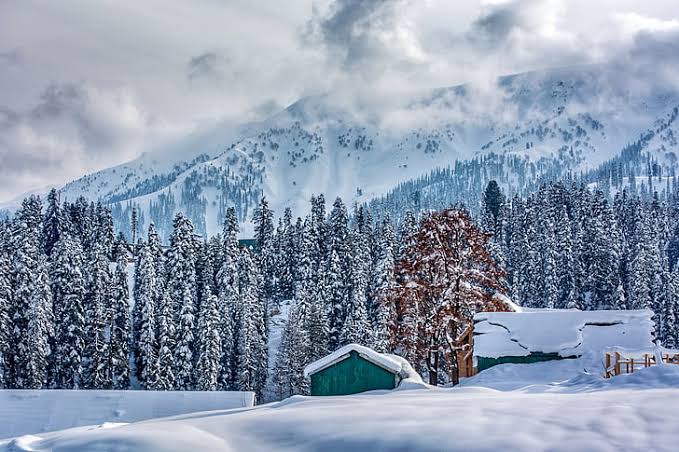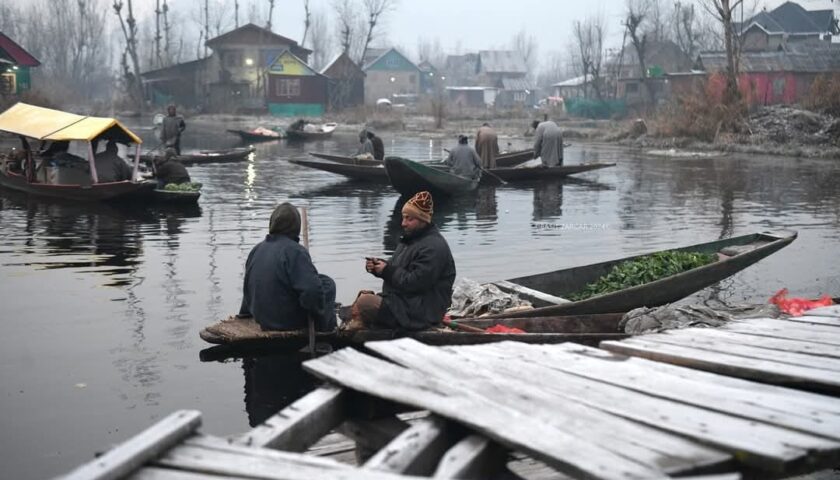Climate Change and Flooding in Kashmir: Why the Himalayas Are on the Frontline of a Global Crisis
By: Javid Amin | 18 Aug 2025
A Region on the Brink
In the last 48 hours, more than 300 lives were tragically lost across India and Pakistan due to catastrophic flooding and landslides. A significant share of this devastation has struck the Kashmir region, long seen as the “crown of the subcontinent” and a place of serene beauty. Once considered a relatively safe zone compared to the flood-prone plains, Kashmir is now emerging as one of the most vulnerable frontlines of climate change.
The Himalayan landscape, with its fragile slopes, dense river networks, and snow-fed streams, is under increasing assault from rising global temperatures and changing weather patterns. What was once a region of predictable snowmelt and gentle rivers is now witnessing violent cloudbursts, devastating flash floods, and landslides that bury entire communities in minutes.
Kashmir today is not merely facing environmental challenges—it is facing an existential crisis.
Why Kashmir Is So Vulnerable
1. Topography and Glacial Fragility
The Himalayas are young mountains, geologically speaking. Their slopes are steep, their soils unstable, and their glaciers fragile. In Kashmir, the situation is particularly precarious because:
-
Glacial retreat: Climate change is accelerating the melting of glaciers such as Kolahoi, Thajiwas, and Machoi. As these glaciers retreat, they release massive volumes of water into rivers and streams, increasing the likelihood of flash floods.
-
Permafrost thaw: Once-frozen soil is thawing, destabilizing slopes and making landslides more frequent and deadly.
-
Glacial lake outburst floods (GLOFs): Melting glaciers often leave behind lakes of trapped water. When these natural dams break, they release walls of water and debris, devastating everything downstream.
Kashmir’s topography turns even moderate weather events into disasters. A heavy downpour on fragile slopes is enough to trigger landslides that can wipe out entire villages.
2. Intensified Monsoon Patterns
Traditionally, Kashmir’s monsoon rains were gentle and sustained over weeks. Today, however, the monsoon is shorter but far more intense. This is due to a simple fact of climate science: warmer air holds more moisture.
-
Cloudbursts: Short bursts of torrential rainfall that can drop several centimeters of water in minutes are becoming common. In steep terrain, these cloudbursts create instant floods.
-
Overwhelmed infrastructure: Narrow valleys and poorly planned drainage systems cannot handle the sudden surges of water, leading to widespread urban flooding.
-
Downstream impact: Rivers like the Jhelum, Lidder, and Chenab quickly swell, threatening Srinagar, Anantnag, and other densely populated towns.
These monsoon changes are not “abnormal” anymore. They are the new normal.
3. Changing Snowfall and Rainfall Cycles
Kashmir’s ecology and agriculture have always relied on predictable snowfall in winter and gradual snowmelt in spring. That cycle is broken.
-
Erratic snowfall: Winters are shorter, with snowfall shifting to late or sometimes absent altogether.
-
Rain instead of snow: Warmer winters mean precipitation falls as rain instead of snow, accelerating runoff and flooding rivers earlier than expected.
-
Agricultural disruption: Apple orchards, saffron fields, and rice paddies all depend on seasonal water cycles. Unpredictable rains are leaving farmers struggling to adapt.
For centuries, Kashmiris planned their farming, festivals, and spiritual life around these patterns. Climate change is tearing that rhythm apart.
Recent Disasters: A Pattern Emerges
The last decade has been a tragic demonstration of climate change in action. What once seemed like “one-off” disasters are now an annual, even seasonal, reality.
-
Kishtwar, August 2025: A sudden cloudburst killed at least 34 people. Dozens more were injured or declared missing as flash floods swept away homes and roads.
-
Uttarakhand, August 2025: A pilgrimage route was buried under mudslides, killing several pilgrims and cutting off thousands more.
-
Pakistan-administered Kashmir, August 2025: Over 60 deaths and hundreds missing after torrential rains triggered landslides and floods.
Going back a few years:
-
2014 Srinagar floods: One of the worst disasters in Kashmir’s modern history, submerging nearly the entire city of Srinagar and killing more than 500 people.
-
2021 and 2022 cloudbursts: Gulmarg, Amarnath Yatra route, and Sonamarg witnessed multiple cloudbursts that caused sudden deaths and destruction.
These disasters are no longer random. They are distress signals of a climate system in upheaval.
The Science Behind the Surge
To understand why Kashmir is facing repeated tragedies, we need to look at the science:
-
Flash floods: These have become the deadliest type of flooding in India, striking with little or no warning. In Kashmir’s steep valleys, they can wipe out entire neighborhoods in under an hour.
-
Urbanization and deforestation: Expanding cities like Srinagar, Anantnag, and Baramulla are paving over wetlands and forests that once acted as natural sponges. Without them, rainwater has nowhere to go.
-
Poor planning: Construction along riverbanks, encroachment on floodplains, and unregulated tourism in fragile zones amplify damage when floods come.
-
Feedback loop: Each disaster weakens infrastructure, leaving the region more vulnerable for the next event.
Kashmir is a case study of how natural vulnerabilities and human negligence combine into catastrophe.
Cultural and Religious Impact
In Kashmir, disasters do not only wash away houses and fields—they wash away heritage, culture, and faith.
-
Pilgrimage routes: The annual Amarnath Yatra and other spiritual treks are increasingly disrupted by landslides and floods. In 2022, dozens of pilgrims were killed in a cloudburst near Amarnath cave.
-
Mosques and shrines: Many historic mosques and shrines are located near rivers, making them vulnerable. Floodwaters often damage centuries-old sites of worship.
-
Community kitchens and gatherings: Floods have repeatedly disrupted langars (community kitchens) and gatherings that are central to Kashmiri social and religious life.
For a people whose identity is deeply tied to land, rivers, and mountains, climate disasters are not only physical but also spiritual wounds.
What Needs to Change
The crisis is undeniable—but it is not irreversible. Action at multiple levels can reduce risk and protect lives.
For Governments:
-
Early warning systems: Deploy advanced radar, satellite monitoring, and mobile alerts to give people crucial hours of warning.
-
Climate-resilient infrastructure: Build flood-resistant housing, elevated roads, and stronger bridges in vulnerable zones.
-
Zoning and enforcement: Ban construction on floodplains and landslide-prone slopes, even if politically unpopular.
For Communities:
-
Disaster preparedness: Conduct regular drills in schools, villages, and cities. Teach people how to respond when floods strike.
-
Eco-friendly development: Encourage the use of local materials, rainwater harvesting, and wetland protection.
-
Community resilience networks: Strengthen local volunteer groups that can provide immediate response before official help arrives.
For Global Stakeholders:
-
Recognize Kashmir as a climate hotspot: International agencies and donors must see Kashmir as a frontline region of climate change, deserving urgent aid and research.
-
Cross-border cooperation: Rivers and glaciers do not respect political boundaries. India, Pakistan, and China must cooperate on shared climate adaptation strategies.
-
Climate justice: Rich nations must support Himalayan regions like Kashmir that bear the brunt of a crisis they did little to create.
Bottom-Line: A Call to Action
Kashmir is no longer just a geopolitical flashpoint—it is a climate frontline. The floods, landslides, and cloudbursts battering the region are not mere “natural disasters.” They are warnings, signals that the mountains are speaking.
If ignored, the cost will be far greater than human lives—it will mean the loss of heritage, hope, and homeland.
Kashmir is telling us a story of a warming world, and it is our responsibility—governments, communities, and global citizens alike—to listen and act.
“The mountains are speaking. Are we listening?”




